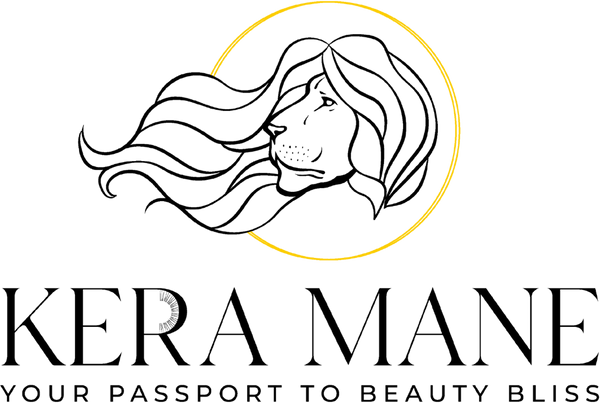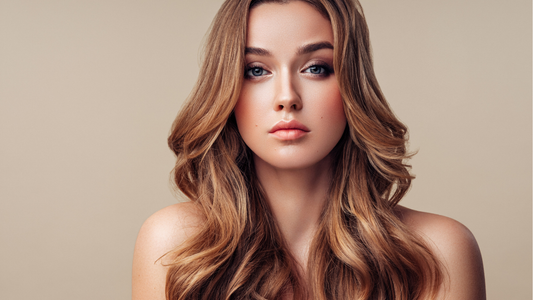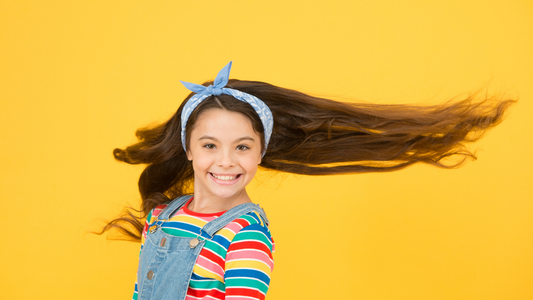For individuals considering a switch from chemical relaxers to keratin treatments, the journey can feel both exciting and uncertain. While relaxers provide a permanent straightening effect by breaking down the natural bonds in the hair, keratin treatments offer a gentler, temporary solution that smooths and strengthens without chemically altering the hair structure. Kera Mane Keratin Hair Treatment is ideal for this transition, as it provides frizz control and smoothness with a formaldehyde-free formula that’s both effective and gentle.
In this guide, we’ll cover what to expect during the transition, along with actionable tips to help you smoothly move from relaxers to keratin treatments while preserving the health and resilience of your hair.
Why Transition from Relaxers to Keratin Treatments?
Switching from relaxers to keratin treatments is a fantastic choice for those seeking a less damaging way to achieve smooth, manageable hair. Here’s why:
- Reduced Damage: Relaxers permanently break down hair bonds, often leading to long-term damage, dryness, and brittleness. Keratin treatments, in contrast, coat the hair shaft to smooth and protect rather than alter the structure.
- Versatile Results: While relaxers fully straighten hair, keratin treatments provide frizz control with a more natural, flexible look. You can enjoy smooth hair that still maintains volume and movement.
- Less Maintenance: Keratin-treated hair generally requires fewer touch-ups and is compatible with various styling routines, allowing you to enjoy smoother, more manageable hair with lower long-term maintenance.
Steps for a Smooth Transition from Relaxers to Keratin Treatments
Transitioning from relaxers to keratin treatments requires patience and special care to avoid breakage and maintain healthy hair during the transformation.
1. Let Your Relaxer Grow Out First
Before applying a keratin treatment, it’s essential to grow out as much of the relaxed hair as possible. Keratin treatments work best on natural hair, as they won’t have the same structural impact on relaxed sections, which are chemically altered.
- Growth Tip: Aim to grow out at least 3–6 months of new growth before introducing keratin. This helps you get the most out of your keratin treatment and minimizes the risk of overlapping chemical processes.
2. Trim Regularly to Remove Relaxed Ends
Regular trims help remove the relaxed portions of your hair gradually, encouraging healthy growth and reducing the likelihood of split ends. As your natural hair grows, trimming relaxed ends ensures a smooth transition and a more uniform texture over time.
- Trimming Tip: Schedule trims every 6–8 weeks to remove any damage and maintain a healthy look. A gradual trim schedule also helps prevent the “line of demarcation” between natural and relaxed hair, which can lead to breakage.
3. Prepare Hair with Deep Conditioning and Protein Treatments
Since relaxers can weaken hair structure, strengthening your hair with deep conditioning and protein treatments is crucial before applying a keratin treatment. Protein fortifies and repairs hair, preparing it for the smoothing benefits of keratin.
- Conditioning Tip: Incorporate a deep-conditioning mask, such as the Kera Mane Repair Max Mask, once a week to boost moisture and resilience in your new growth. Use a protein treatment once a month to fortify hair as you transition.
4. Opt for a Keratin Treatment Formula That’s Gentle and Formaldehyde-Free
When selecting a keratin treatment, go for a gentle, formaldehyde-free formula like Kera Mane Keratin Hair Treatment. This type of treatment smooths the hair without exposing it to harsh chemicals, making it suitable for transitioning hair that may be more vulnerable.
- Application Tip: If possible, apply keratin only to the natural new growth rather than overlapping onto the relaxed sections. This protects the chemically treated ends from additional stress.
5. Minimize Heat Styling to Avoid Damage
While transitioning, minimize the use of heat tools to prevent damage to both the new growth and the relaxed hair. Frequent heat styling can weaken keratin-treated hair and affect the durability of the treatment.
- Heat Styling Tip: Use heat tools sparingly, and always apply a heat protectant to prevent thermal damage. Opt for air-drying or low-heat settings to maintain the health of your transitioning hair.
Maintaining Healthy Hair Post-Keratin Treatment
Once you’ve fully transitioned to keratin treatments, it’s essential to follow a supportive care routine to maximize the treatment’s effects and keep your hair looking smooth and healthy.
1. Switch to a Sulfate-Free, Keratin-Safe Shampoo and Conditioner
Sulfates can strip keratin from the hair, reducing the treatment’s longevity. A sulfate-free shampoo and conditioner help preserve your keratin treatment while providing gentle cleansing and hydration.
- Product Tip: Use a sulfate-free formula specifically designed for keratin-treated hair to keep your treatment intact and your hair hydrated.
2. Deep Condition Regularly to Maintain Moisture
Even with a keratin treatment, your hair still needs regular hydration. A weekly deep-conditioning treatment helps keep hair soft, smooth, and resilient, ensuring it stays frizz-free and manageable.
- Conditioning Tip: Use the Kera Mane Repair Max Mask for deep hydration, applying it once a week or every other week, depending on your hair’s needs. Focus on the mid-lengths and ends where dryness often occurs.
3. Limit Washing to Extend the Treatment’s Effects
Frequent washing can cause keratin to wear off faster, especially if you live in a humid climate. Limit washing to every 3–4 days to preserve the smoothness and longevity of the treatment.
- Washing Tip: Rinse hair with cool water to help seal the cuticle and maintain the treatment’s effects. On non-wash days, use a keratin-safe dry shampoo to keep hair fresh.
4. Avoid Overusing Heat Styling Tools
One of the benefits of keratin-treated hair is its reduced need for heat styling. However, if you choose to use heat tools, always apply a heat protectant to prevent any damage that could weaken the keratin bond.
- Styling Tip: Let hair air dry as often as possible, and when using heat, opt for the lowest setting to maintain the treatment’s integrity.
Common Questions About Transitioning from Relaxers to Keratin Treatments
Q: Can I apply a keratin treatment to relaxed hair immediately?
A: It’s best to wait until most of your relaxer has grown out. Applying keratin to relaxed hair can lead to mixed textures and may cause excessive breakage along the line of demarcation between natural and relaxed sections.
Q: Will my hair revert to its natural texture after the keratin treatment fades?
A: Yes, keratin treatments are temporary and do not permanently alter your hair texture. After 3–4 months, your hair will gradually return to its natural state, allowing for easy touch-ups as needed.
Q: Can I color my hair while transitioning?
A: It’s best to avoid chemical color processes while transitioning from relaxers to keratin treatments. Wait until your hair is fully transitioned or consult a stylist for a gentle color solution if necessary.
Why Kera Mane is Perfect for Transitioning from Relaxers
Kera Mane Keratin Hair Treatment offers a gentle, effective alternative for those transitioning from relaxers, providing a smooth, frizz-free look without the harsh effects of chemical relaxers. Here’s why it’s an ideal choice for transitioning:
- Formaldehyde-Free Formula: Kera Mane’s formula is gentle on hair and scalp, providing smoothness without harmful chemicals, making it suitable for transitioning hair.
- Strengthening and Smoothing Benefits: The keratin treatment reinforces the hair shaft, reducing frizz and enhancing manageability for a low-maintenance, polished look.
- Compatible with a Variety of Hair Textures: Kera Mane’s flexible formula allows you to retain volume and natural texture, ideal for those who want to avoid the flat, overly straight appearance that relaxers often create.
Conclusion: Embrace a Healthy Transformation with Kera Mane
Transitioning from relaxers to keratin treatments is an empowering choice that lets you embrace smooth, healthy hair with reduced damage and increased versatility. With Kera Mane Keratin Hair Treatment, you can enjoy long-lasting frizz control, easy manageability, and a natural look that complements your style. By following these steps and incorporating supportive aftercare, your journey to keratin-treated hair can be smooth, successful, and rewarding.




